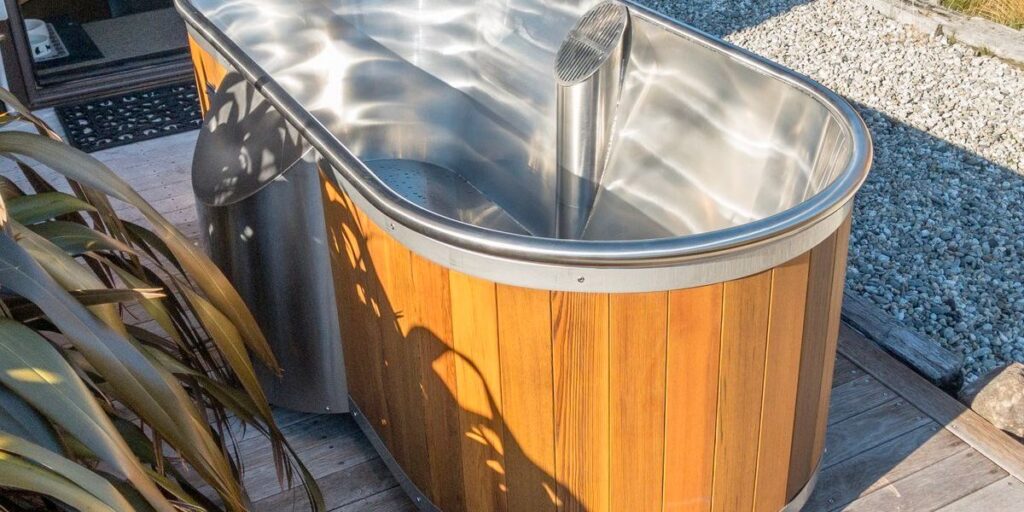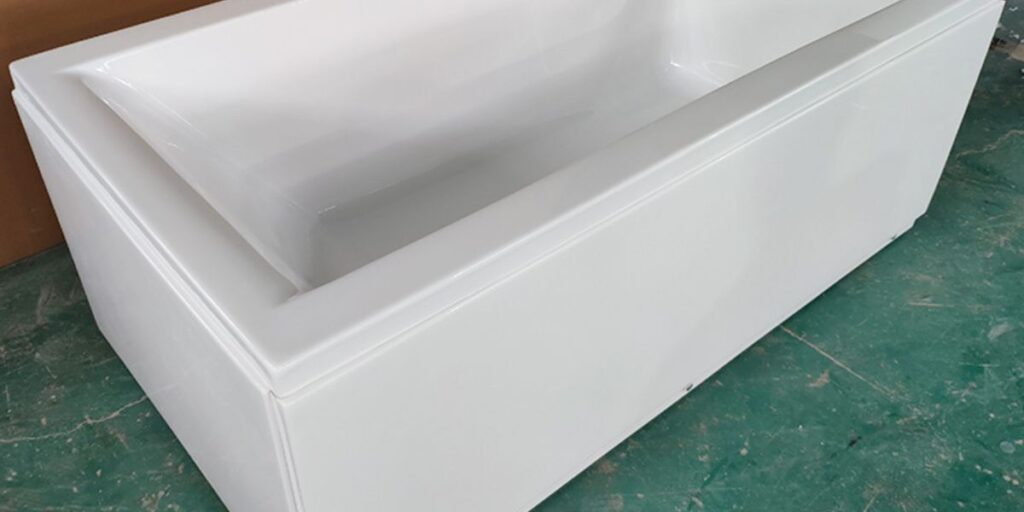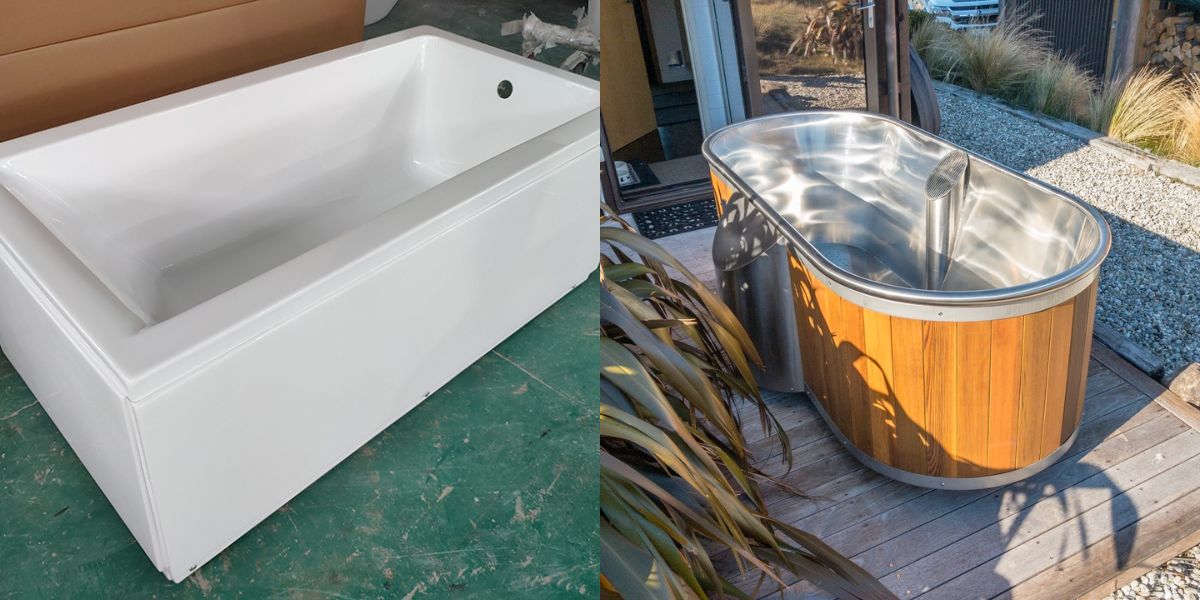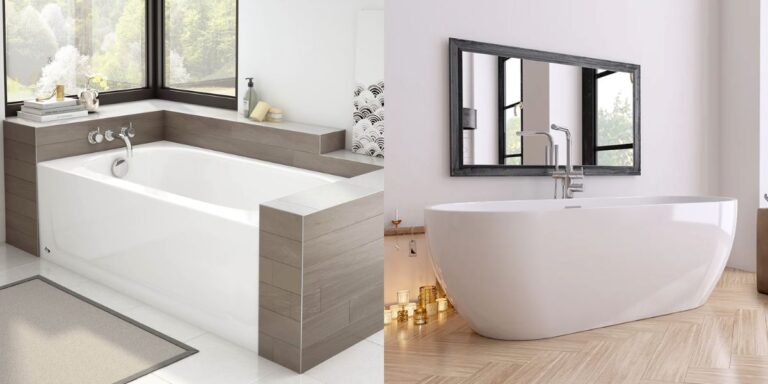Which is Better: Fiberglass or Steel Bathtub?
If you’re remodeling your bathroom, one of the biggest decisions you’ll need to make is what material to use for the bathtub. The two most popular options are fiberglass and steel. Both have their own sets of pros and cons to weigh when deciding which is better for your home.
We’ll look at the key differences between fiberglass and steel tubs. You know, with some thoughtfulness and research, you can choose the right material to suit your bathroom’s needs and style.
Basically we’ll compare the durability, cost, design, ease of installation, and other factors. By the end, you’ll have a clear sense of whether fiberglass or steel is the ideal bathtub material for your situation.
But in one line, Steel tubs are highly durable, with a strong resistance to blemishes, discolorations, and fractures. Unless subjected to a heavy impact, these bathtubs are built to stand the test of time.
See more; The Key Differences Between Acrylic and Fiberglass Bathtubs
Steel Bathtubs: Durable and Customizable

Steel tubs have been around for decades, and for good reason. Let’s first look at some of the benefits that steel bathtubs offer:
Durability:
Steel tubs are extremely durable and long-lasting. With proper care, a steel tub can easily last 20-30 years or longer. The rigid steel construction resists scratches, dents, and other wear and tear issues better than many materials. This makes steel a great investment that can stand the test of time.
Customization:
If you want a unique, custom-shaped tub, steel allows for more design flexibility. Steel tubs come in virtually any size and configuration, including corner tubs, oval tubs, and neo-angled tubs. This material can be molded into creative, one-of-a-kind styles to match your dream bathroom design.
Easy to Clean:
Steel tubs feature a smooth, glossy porcelain enamel surface that is nonporous and does not stain. This makes cleaning and maintenance easy breezy, with dirt and soap scum rinsing off without hassle. You won’t have to deal with mold or mildew taking hold either.
Of course, steel bathtubs aren’t without some downsides. Here are a few things to keep in mind:
Heavier to Install:
Steel tubs are heavier than fiberglass, weighing 150-200 pounds on average. Some professional help may be needed to maneuver it into place without damaging the tub or your floors and walls.
Can Rust:
Uncoated or enameled steel can eventually rust and corrode when exposed to moisture over time. Proper care is essential to prevent this.
Noisier:
There’s no way around the fact that steel transmits noise and echoes more than other materials. Every splash and movement reverberates loudly. If bathroom sounds bother you, steel may not be ideal.
Fiberglass Bathtubs: Lightweight and Low-maintenance

Next, let’s take a look at the pros and cons of fiberglass bathtubs:
Lightweight Feel:
Weighing around 50-75 pounds, fiberglass tubs are much lighter than steel. This makes installation a possible DIY project, even for one person. Fiberglass tubs are also warmer to the touch and have less edge hardness than steel.
Color and Style Choices:
While limited in shape compared to steel, fiberglass tubs come in a rainbow of different colors. From deep blue to vibrant red, you can easily incorporate a fiberglass tub into your color scheme. Various surface textures are also available to mimic materials like stone and copper.
Affordable Price:
Fiberglass tubs cost significantly less than steel, by about 50% or more. This makes fiberglass a budget-friendly option when renovating. Coupled with lower installation costs, you can save big.
Now for the possible disadvantages:
Less Durable:
Although durable, fiberglass scratches and stains much more easily over time than steel. Chips and cracks are also a possibility. Fiberglass has an expected life span of only 7-15 years.
Limited Sizing:
Aside from basic shapes like rectangles and ovals, unique sizes and designs are not an option with fiberglass. You have to work with the standard offerings.
Prone to Flexing:
While minimal, fiberglass can flex and bend slightly over time, especially when people enter and exit the tub. This may compromise sealants and caulking.
Comparing Key Factors Between Bathtub Materials
Now that we’ve looked at the general pros and cons, let’s directly compare fiberglass and steel bathtubs on some key factors:
Cost
- Fiberglass tubs cost 50-75% less than steel tubs on average.
- Fiberglass also has lower installation costs since it’s lightweight. This further widens the price difference.
- Steel tubs may have a higher upfront cost, but can save money in the long run due to longevity.
Durability
- Steel tubs have superior durability and can last decades with proper care.
- Fiberglass only lasts 10-15 years before showing wear and may need to be refinished or replaced sooner.
Noise
- Steel tubs transmit significantly more echo and noise. Every splash reverberates loudly.
- Fiberglass offers a quieter bathing experience and absorbs noise well.
Customization
- Steel allows for almost endless custom sizes and shapes, like corner tubs.
- Fiberglass only comes in set sizes and configurations from the manufacturer.
DIY Installation
- Fiberglass tubs are easier for DIY installation since they are lightweight.
- Steel tubs often require professional installation due to weight and custom sizing needs.
As you can see, each material has strengths and weaknesses that sets it apart from the other. Keep these comparisons in mind as you evaluate your options.
Choosing the Right Tub for Your Bathroom
When deciding between a fiberglass or steel bathtub, there are several variables to consider:
Budget: What is your budget for the tub and installation costs? Fiberglass is significantly cheaper overall. But if budget isn’t an issue, steel may be worth the investment.
Design Aesthetic: Do you want a modern, colorful look or a traditional style? Fiberglass offers glossy color finishes, while steel has a more classic porcelain feel.
Use Frequency: Do you take frequent baths or require a tub for children or elderly? Higher use needs may call for steel’s superior durability.
Noise: Will errant noise from the tub be an issue based on bathroom location? If so, fiberglass dampens echoes.
Household Size: Do you need a roomy tub for multiple bathers? Steel allows more custom sizing options.
Cleaning: Do you want the easiest surface to keep clean and hygienic? Steel’s nonporous finish prevents mold buildup.
Future Renovations: How long do you plan to keep the tub until the next remodel? Steel can potentially last through multiple renovations.
Once you think through your needs in these areas, one material will likely stand out as the wiser choice for your situation. Don’t rush the decision – a little reflection goes a long way.
The Bottom Line
Let’s quickly recap the biggest differences between these two ever-popular bathtub materials:
Steel:
Excellent durability and custom sizing options, easier to clean, higher upfront cost, requires professional installation, can show rust over time.
Fiberglass:
More affordable, available in various colors, less durable than steel, limited sizing, quieter and warmer than steel, flexes over time.
For many homeowners, fiberglass offers an attractive balance of affordability, low maintenance, and convenience. But for those who prioritize custom designs and long-lasting durability, steel tubs are worth the extra investment.
Keep your specific needs in mind, weigh the pros and cons, and you’re sure to end up with a durable, eye-catching tub that provides an enjoyable bathing experience for years to come. The choice between fiberglass and steel ultimately comes down to your personal priorities. With the information above, you now have a great sense of how to select the ideal material to transform your dream bathroom into a reality.
- Can Bath Fitter Go Over a Fiberglass Tub?
- Can You Refinish Fiberglass Bathtubs?
- Can You Paint a Fiberglass Bathtub?

William J. Bullock is a licensed plumber with over 15 years of experience installing and repairing bathtubs. He runs his own plumbing company in Greenville and serves residential and commercial clients. William is dedicated to providing honest, transparent advice to help homeowners make informed decisions about their bathroom renovations.
He has established expertise in selecting bathtubs, planning custom installations, diagnosing issues, and completing repairs. William aims to share practical tips and reliable recommendations based on extensive hands-on work. When he isn’t on a job site, William enjoys spending time with his family and volunteering at local community events. He takes pride in delivering quality service and enjoys helping people upgrade their homes.







